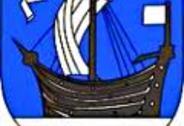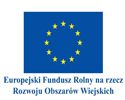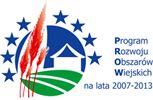Lipsk

One third of the area of the gmina is the Biebrza National Park – home to elk, habitat of a big population of beavers, otters and wolves, nesting ground for 160 species of swamp, water and forest birds. Along with the birds visiting the Biebrza Land, the ornithologists have counted over 257 species of birds here, 21 of which are on the ‘Red List’ of endangered species. Lipsk is surrounded by peat swamp grasslands, remarkably naturally valuable and rich in unique plant communities.
This gmina, situated by the Upper Biebrza, has a very rich history. According to old documents, Lipsk has been granted rights of a royal town as early as 1580. The city crest has remained unchanged – it depicts a boat with a sail because king Stephen Bathory planned to create a river route on the Biebrza and Lipsk was supposed to be an important port. In mid-19th century the city lost its municipal rights, but due to the efforts of its inhabitants these rights were restored in 1983. After a turbulent period of wars and invasions, Lipsk remembered the figure of major Henryk Dobrzański aka ‘Hubal’, who led his troops into battle from this town, and a unique line of WWII bunkers built by the Red Army. These shelters were a part of the so-called ‘Molotov line’, constructed on the western borders of the pre-war USSR. Today they attract enthusiasts of military buildings. In some villages like Wołkusz and Starożyniec we can still see regional wooden houses with distinctive window shutters, window heads and porches. Both bike and hiking tourist trails of Gmina Lipsk run through one of Poland’s most interesting botanical areas. There we can see such unique swamp plant colonies as mud sedges, moss sedges and cranberry growing on peat bogs. We can also admire natural and landscape values of the Biebrza valley as well as picturesque rivers: Haciłówka and Wołkuszanka with its wild, unameliorated surroundings, Perstunka and the south-eastern part of the Augustów Primeval Forest. We can also stumble upon the remains of the ‘Gościniec Grodzieński’ (Grodno Road) – in the 19th century it was the main route connecting Augustów and Lipsk with Grodno.
The Regional Museum in Lipsk has a rich ethnographic collection. The Biebrza meadows and local forests – areas of the ‘Green Lungs of Poland’ with their special climatic values and pristine nature – have resources that are ideal for producing traditional local food. The abundance of mushrooms, honey, herbs and fish, as well as the local delicacy – Biebrza cranberry used by the local housewives to create excellent preserves, is an attraction that lures tourists from all places. The gmina is famous for its great Easter egg traditions, cherished and kept alive by the Lipsk community supported by an active Regional Culture Centre. Colourful Easter eggs are decorated using the hot wax and dye method, and their decorative patterns: rosettes, fans, wheat heads and suns are passed down from generation to generation. The Easter eggs are popular among tourists from all over the world. A rich ethnographic collection can be found in the local Regional Museum, more specifically in the Museum of the Lipsk Easter Egg. Equally famous is the woollen double-warp fabric.
In Lipsk, also other traditions of regional craft, such as weaving, sculpting and embroidery are preserved. Local artists create Easter palms, blotting paper decorations and straw decorations and bake ceremonial wheaten cakes: ‘Korovais’ and wedding bird-cakes. These regional products can be purchased directly from their makers. Lipsk handicraft is included in the Podlasie folk handicraft route created by the Ethnography Department of the Podlaskie Museum in Białystok.
This gmina, situated by the Upper Biebrza, has a very rich history. According to old documents, Lipsk has been granted rights of a royal town as early as 1580. The city crest has remained unchanged – it depicts a boat with a sail because king Stephen Bathory planned to create a river route on the Biebrza and Lipsk was supposed to be an important port. In mid-19th century the city lost its municipal rights, but due to the efforts of its inhabitants these rights were restored in 1983. After a turbulent period of wars and invasions, Lipsk remembered the figure of major Henryk Dobrzański aka ‘Hubal’, who led his troops into battle from this town, and a unique line of WWII bunkers built by the Red Army. These shelters were a part of the so-called ‘Molotov line’, constructed on the western borders of the pre-war USSR. Today they attract enthusiasts of military buildings. In some villages like Wołkusz and Starożyniec we can still see regional wooden houses with distinctive window shutters, window heads and porches. Both bike and hiking tourist trails of Gmina Lipsk run through one of Poland’s most interesting botanical areas. There we can see such unique swamp plant colonies as mud sedges, moss sedges and cranberry growing on peat bogs. We can also admire natural and landscape values of the Biebrza valley as well as picturesque rivers: Haciłówka and Wołkuszanka with its wild, unameliorated surroundings, Perstunka and the south-eastern part of the Augustów Primeval Forest. We can also stumble upon the remains of the ‘Gościniec Grodzieński’ (Grodno Road) – in the 19th century it was the main route connecting Augustów and Lipsk with Grodno.
The Regional Museum in Lipsk has a rich ethnographic collection. The Biebrza meadows and local forests – areas of the ‘Green Lungs of Poland’ with their special climatic values and pristine nature – have resources that are ideal for producing traditional local food. The abundance of mushrooms, honey, herbs and fish, as well as the local delicacy – Biebrza cranberry used by the local housewives to create excellent preserves, is an attraction that lures tourists from all places. The gmina is famous for its great Easter egg traditions, cherished and kept alive by the Lipsk community supported by an active Regional Culture Centre. Colourful Easter eggs are decorated using the hot wax and dye method, and their decorative patterns: rosettes, fans, wheat heads and suns are passed down from generation to generation. The Easter eggs are popular among tourists from all over the world. A rich ethnographic collection can be found in the local Regional Museum, more specifically in the Museum of the Lipsk Easter Egg. Equally famous is the woollen double-warp fabric.
In Lipsk, also other traditions of regional craft, such as weaving, sculpting and embroidery are preserved. Local artists create Easter palms, blotting paper decorations and straw decorations and bake ceremonial wheaten cakes: ‘Korovais’ and wedding bird-cakes. These regional products can be purchased directly from their makers. Lipsk handicraft is included in the Podlasie folk handicraft route created by the Ethnography Department of the Podlaskie Museum in Białystok.










